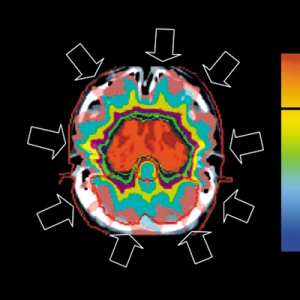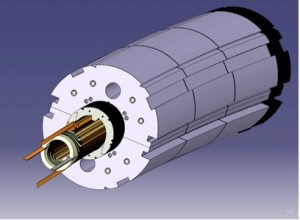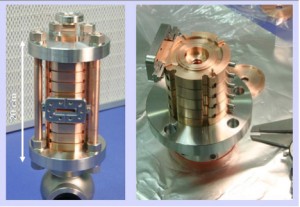
The construction of new particle accelerators and detectors requires continuous development of increasingly advanced technologies in various application fields of electronics, computing and computer networks. The Frascati National Laboratories are engaged in numerous projects involving the development of new accelerators, detectors and in other interdisciplinary fields.
Developments in advanced technological research in nuclear and sub-nuclear physics involve various fields of public interest and primarily medicine and the arts.
The need to create accelerator machines with characteristics allowing the study of the most intimate properties of matter, has stimulated the development of superconducting technologies and highly advanced mechanics in order to implement accelerator cavities and superconducting magnets and cables. The main application of superconducting magnets in particle accelerators is the implementation of dipoles curving the charged particle beam as effectively and in the shortest space possible. This requires magnetic field intensity and rate of increase of the same impossible to obtain without superconducting technologies.

In future accelerators, moreover, the high beam intensity required, together with its extremely small size, also requires development of analysis of the materials with which the accelerators themselves are made and of the surfaces in contact with the circulating beam.
The LNF are at the forefront in this type of materials science and surface physics technological research in connection with accelerator physics, having not only specific expertise in the various fields, but also the possibility of using Synchrotron Light radiation emitted by Dafne.
Of great interest for recent linear accelerator studies and applications is the research and development for achieving increasingly compact and powerful accelerating cavities. The study of these cavities in the X-band, i.e. at 11,424 GHz and not at approx. 3 GHz (as currently used), fosters the acquisition of innovative high frequency technologies in INFN structures. This research has not only the aim of improving the performance of future linear colliders but also concerns the implementation of relatively simple and compact structures for the production of high-luminosity electron beams for scientific and biomedical applications.

The Frascati National Laboratories also have certain advanced technological research activities of relevance for space physics. In the Laboratories, in fact, an experimental apparatus and an innovative procedure have been developed for space qualification of retroreflector mirrors for the laser tracking of satellites from Earth stations. This “laser tracking” provides a direct and absolute measurement of the satellite’s position with respect to the centre of gravity of the Earth; the most precise and, at the same time, least expensive.
 INFN-LNF Laboratori Nazionali di Frascati
INFN-LNF Laboratori Nazionali di Frascati